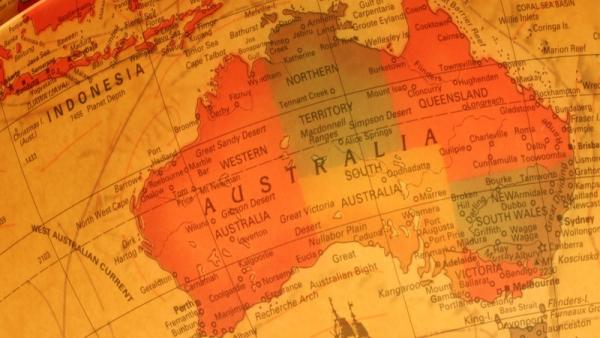
Elena Collinson, Senior Project and Research Officer, Australia-China Relations Institute, University of Technology Sydney |
On November 23 Australia released its first Foreign Policy White Paper in 14 years. Developed by the Department of Foreign Affairs and Trade, the 2017 paper enjoys broad bipartisan support. Shadow Foreign Minister Penny Wong, writing in The Australian, stated:[1]
One of the very first acts of the Turnbull government was to bury its predecessor’s Australia in the Asian Century white paper. Labor won’t be doing the same with Julie Bishop’s foreign policy white paper.
The white paper largely centres on the challenges presented by China’s rise coupled with concerns about decreased US engagement in the Indo-Pacific region.
This is made plain on page one, three paragraphs into the document:[2]
In the Indo-Pacific, the economic growth that has come with globalisation is in turn changing power balances. The United States has been the dominant power in our region throughout Australia’s post-World War II history. Today, China is challenging America’s position.
This is more powerful language than has been used in other policy papers.
The Australian Financial Review reported that Foreign Minister Julie Bishop said it was essential Australia had a positive agenda with China. She told the newspaper:[3]
We need to be clear about our differences and manage them carefully and do what we can to encourage China to use its growing influence to act in ways that help stabilise the region.
In launching the white paper Prime Minister Malcolm Turnbull stated:[4]
This is the first time in our history that our dominant trading partner is not also our dominant security partner. We must see this as an opportunity not as a risk.
The white paper says:[5]
The Government is committed to strong and constructive ties with China. We welcome China’s greater capacity to share responsibility for supporting regional and global security. We seek to strengthen our Comprehensive Strategic Partnership for the benefit of both nations.
Nominated areas for ‘positive and active engagement’ between Australia and China include:[6]
- annual meetings between leaders, foreign ministers and economic ministers;
- cooperation on issues ranging from energy to law enforcement and security through ministerial and other senior-level dialogues;
- building on the China-Australia Free Trade Agreement by expanding market access and opportunities for our businesses;
- expanding defence cooperation;
- promoting stronger connections at the sub-national level, working closely with states and territories; and
- expanding Australia’s diplomatic footprint in China by opening a new consulate-general in Shenyang.
The paper notes:[7]
[Australia] welcome[s] and will continue to contribute to important Chinese initiatives, such as the Asian Infrastructure Investment Bank (AIIB), of which Australia is a founding member.
It also states:[8]
Australia will seek to work more closely with China in response to global challenges.
Such global challenges include terrorism, the proliferation of WMDs and sustainable development.
The white paper does not explicitly mention pursuing a reconvening of the quadrilateral security dialogue comprising Australia, the US, Japan and India. But it makes a point of reaffirming Australia’s ‘strong’ commitment to its trilateral dialogues with the US and Japan; and India and Japan, and states that it ‘is open to working with our Indo-Pacific partners in other plurilateral arrangements.’[9]
The paper says:[10]
The Government will lift the ambition of our engagement with major Indo-Pacific democracies. We will do more bilaterally and work across these partnerships, including in small groups, to promote and protect a shared vision for the region and to support a balance in the region favourable to our interests.
The paper expresses concern about the exertion of Chinese influence in the region potentially acting as a destabilising force:[11]
Like all great powers, China will seek to influence the region to suit its own interests. As it does, a number of factors suggest we will face an increasingly complex and contested Indo-Pacific.
To this end, the paper seems to demonstrate an expectation that a post-Trump United States will return to the region and will be in a position to ensure the preservation of the post-WWII order:[12]
The Australian Government judges that the United States’ long-term interests will anchor its economic and security engagement in the Indo-Pacific…Most regional countries, including Australia, clearly consider a significant US role in the Indo-Pacific as a stabilising influence.
The paper nominates the ongoing territorial disputes in the South China as a ‘major fault line in the regional order’ and states:[13]
Australia is particularly concerned by the unprecedented pace and scale of China’s activities.
Another nominated fault line is the East China Sea and Taiwan Strait.
In order to address this, the paper commits Australia to increasing ‘its investments in maritime security capacity building in Southeast Asia’.[14]
However, the white paper also makes it clear that '[t]he risk of direct military threat to Australia is low'. It asserts, 'Military modernisation in our region is not directed at Australia...'.
The White Paper makes one mention of China’s Belt and Road Initiative, placing it in the context of safeguards needed for Australian engagement, in line with comments previously made by Foreign Minister Julie Bishop and Department of Foreign Affairs and Trade Secretary Frances Adamson:[15][16]
The region’s infrastructure needs are massive and wide-ranging. It is in our interests for this infrastructure to be developed in a way that conforms to the principles set out above [strong, transparent rules; fair and open competition; transparent and non-discriminatory arrangements with predictable regulatory systems]. We also favour infrastructure that has robust social and environmental safeguards and avoids unsustainable debt burdens on the economies of the region. It is on this basis that Australia engages with regional infrastructure initiatives, including China’s Belt and Road.
Endnotes
[1] Penny Wong, ‘Change for sake of political expediency undermines foreign policy’, The Australian, November 23 2017 <http://www.theaustralian.com.au/opinion/change-for-sake-of-political-expediency-undermines-foreign-policy/news-story/a52c293cfa36500eff103e1ac5e93cd6>.
[2] Australian Government, 2017 Foreign Policy White Paper, p 1 <https://www.fpwhitepaper.gov.au/foreign-policy-white-paper>.
[3] Andrew Tillett, ‘Alarm bells ring on China’s rise in foreign policy white paper’, Australian Financial Review, November 23 2017 <http://www.afr.com/news/alarm-bells-ring-on-chinas-rise-20171122-gzqp7t>.
[4] Phillip Coorey, ‘Foreign policy white paper: Australia’s US, China challenge hasn’t changed’, Australian Financial Review, November 23 2017 <http://www.afr.com/news/foreign-policy-white-paper-australias-us-china-challenge-hasnt-changed-20171122-gzr39f>.
[5] Australian Government, 2017 Foreign Policy White Paper, p 4.
[6] Ibid, p 40.
[7] Ibid, p 40.
[8] Ibid, p 81.
[9] Ibid, p 40.
[10] Ibid, p 37.
[11] Ibid, p 26.
[12] Ibid, p 26.
[13] Ibid, p 47.
[14] Ibid, p 47.
[15] See e.g., Julie Bishop, ‘Australia-China Foreign and Strategic Dialogue – joint press conference with Chinese Foreign Minister Wang Yi, Canberra’ February 7 2017 <https://foreignminister.gov.au/transcripts/Pages/2017/jb_tr_170207.aspx>; Andrew Greene, ‘DFAT boss warns international students to resist Chinese Communist Party’s ‘untoward’ influence’, ABC News, October 9 2017 <http://www.abc.net.au/news/2017-10-09/universities-warned-to-resist-chinese-communist-party-influence/9030372>; Andrew Greene, speech transcript screenshot, Twitter, October 9 2017 <https://twitter.com/AndrewBGreene/status/917310759960428544>
[16] Australian Government, 2017 Foreign Policy White Paper, p 45.
Author
Elena Collinson, Senior Project and Research Officer, Australia-China Relations Institute, University of Technology Sydney


